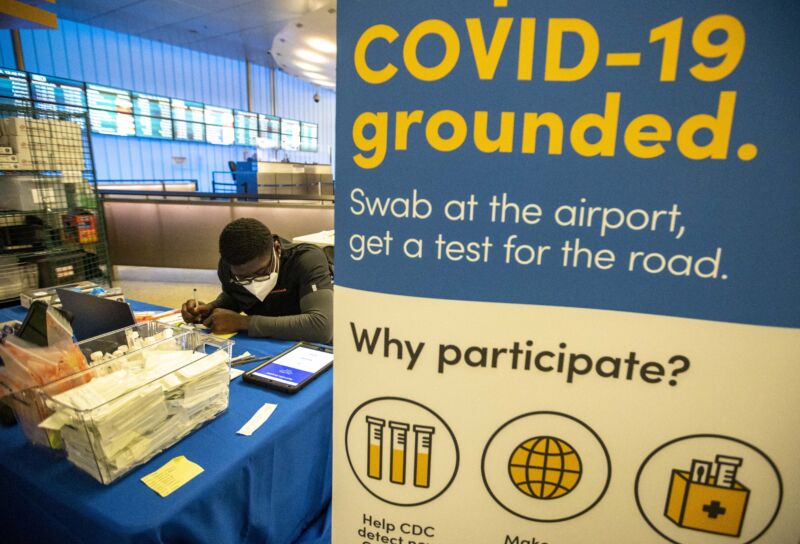XBB.1.5: Still more questions than answers on risk of latest omicron subvariant

Enlarge / A CDC COVID-19 variant testing site inside Tom Bradley International Terminal at Los Angeles International Airport on Monday. The airport testing is part of the government's early warning system for detecting new variants, which began expanding recently in the wake of a COVID-19 surge in China. (credit: Getty | Jill Connelly/Bloomberg )
Amid a winter wave of COVID-19 in the US, the latest coronavirus omicron subvariant, XBB.1.5, has grabbed headlines due to its swift rise, raising fears of another towering spike of the disease. But the spotlight is revealing more questions than answers in the early days of the subvariant, which has ominously been described as one of the most immune-evasive omicron subvariants to date.
Last week, the US Centers for Disease Control and Prevention quietly downgraded estimates of its prevalence. As Ars and other outlets reported, the CDC previously estimated that XBB.1.5 accounted for 40.5 percent of COVID-19 cases throughout the country in the week ending on December 31, with the highest prevalence in the Northeast. But last Friday, the agency updated the estimates with a backlog of sequencing data from over the holidays, which indicated XBB.1.5 accounted for 18 percent of cases nationwide that week-not 40.5 percent. Currently, the CDC estimates that XBB.1.5 accounted for 27.6 percent of cases nationwide in the week ending on January 7. But the 95 percent prediction interval is wide, spanning 14 percent to 46.5 percent.
The updated estimate still indicates that the variant, first detected in New York in October, is on the rise. But the uncertainty throws a wrench in estimates of its transmission advantage over other omicron subvariants. BQ.1.1 is still the most prevalent omicron subvariant, accounting for an estimated 34 percent of cases in the US.